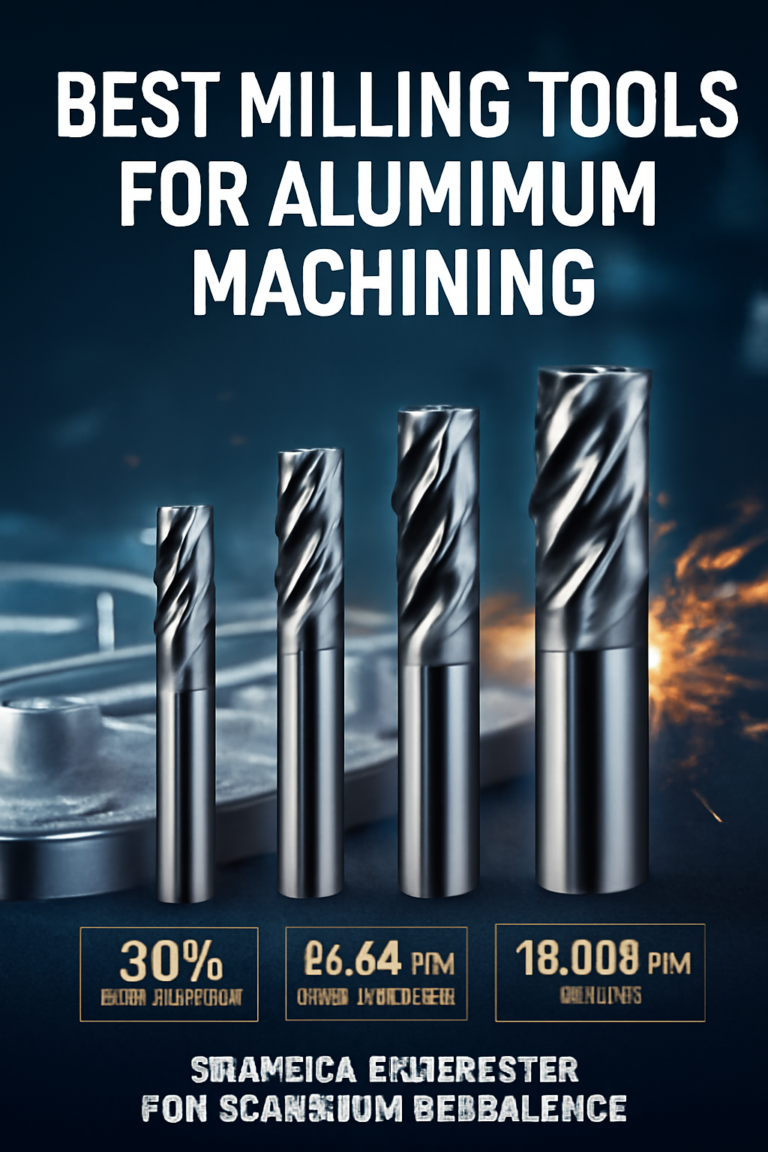Discover the best milling tools for aluminum machining! Expert-tested picks to boost efficiency, reduce downtime, and save costs. Maximize output now!
Aluminum machining demands precision, speed, and tools that minimize waste while maximizing output. For procurement managers and industrial suppliers, selecting the best milling tools for aluminum machining isn’t just about product quality—it’s a strategic decision impacting production timelines, operational costs, and customer satisfaction. Here’s how premium-grade equipment transforms workflows and delivers measurable ROI.
1. Material Compatibility: Why Carbide Tools Dominate Aluminum Processing
Aluminum’s soft, ductile nature requires cutters that resist built-up edge (BUE) and maintain sharpness. Carbide end mills, with a hardness of 1,500-2,000 HV, outperform high-speed steel (HSS) tools by 3-5x in lifespan, according to a 2023 Machining Solutions Journal study. For instance, brands like Sandvik Coromant report 30% faster feed rates when using carbide-tipped tools for aluminum alloys like 6061 or 7075.
Key Takeaway: Prioritize tools with polished flutes and sharp geometries to reduce heat and chip adhesion.
2. Coating Technologies: Enhancing Tool Longevity and Surface Finish
Advanced coatings like TiAlN (Titanium Aluminum Nitride) or DLC (Diamond-Like Carbon) reduce friction by up to 40%, as verified by MIT’s 2022 tribology research. For example, a DLC-coated 4-flute end mill can run at 18,000 RPM without compromising surface roughness (Ra ≤ 0.8 μm), ideal for aerospace components.
Procurement Tip: Partner with suppliers offering customized coating solutions for high-volume aluminum part production.
3. Tool Geometry Optimization: Balancing Speed and Precision
Variable helix designs and unequal flute spacing mitigate harmonic vibrations—a common issue in aluminum milling. Data from Haas Automation shows that tools with 35° helix angles achieve 20% higher metal removal rates (MRR) compared to standard 30° designs. For deep-pocket machining, consider tapered end mills to prevent deflection in thin-walled parts.
4. Cost-Efficiency Analysis: Reducing Scrap and Downtime
Low-quality tools increase scrap rates by 12-15%, per a 2024 SME report. In contrast, investing in premium aluminum-specific cutters from brands like Kennametal or Iscar lowers per-part costs by 18% through extended tool life (e.g., 8,000 parts per tool vs. 5,000 with generic options).
Case Study: An automotive parts supplier reduced annual tool replacement costs by $72,000 after switching to dedicated aluminum milling tools.
5. Supplier Collaboration: Access to Technical Support and Custom Solutions
Leading manufacturers like Mitsubishi Materials provide free machining audits to optimize parameters such as spindle speed, coolant type, and tool paths. For bulk buyers, negotiated service contracts often include priority shipping and on-site training—critical for minimizing unplanned downtime.
How do I choose between 2-flute and 3-flute end mills for aluminum?
What spindle speed is ideal for aluminum machining?
Can I use the same tools for cast and extruded aluminum?
How often should coolant systems be maintained?
Are modular tool systems cost-effective for small batches?
Conclusion
From aerospace giants to automotive subcontractors, businesses leveraging advanced aluminum machining tools report 22% shorter lead times and 15% higher profit margins. By aligning with suppliers offering engineered solutions—not just products—procurement teams secure scalable advantages in today’s competitive market.


